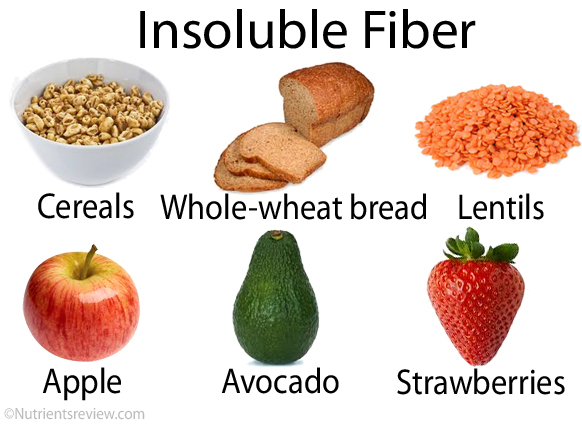Health Benefits of Fiber-Rich Foods
by TVance | October 17, 2016 7:33 am
While we are continually told that we need to eat fiber-rich foods, many of us are not completely aware of what the real health benefits of foods that contain fiber are. It would also be fair to say that many people do not know that there are two types of fiber – soluble and insoluble fiber – and what the differences are.
 [1]
[1]
One reason for this is that most of those nutritional labels we see in food products do not indicate if it is soluble or insoluble fiber. So if the food label only says ‘fiber’ how would you know?
You need to become your own nutrition expert and know which foods will give you the best source of soluble or insoluble fiber and why you need to include them in your diet.
Fiber is almost similar to sugars and starches due to its carbohydrate makeup. However, the type of carbohydrates that fiber contains, the human body cannot digest, while carbohydrates found in starches and sugars can be digested.
However, although our body cannot digest the carbohydrate found in fiber, it helps our system digest other foods and keeps our entire digestive system functioning at its best.
The Two Fiber Types
There are two types of fiber which act differently in our bodies and both are essential to digestive health.
Soluble fiber can be dissolved in water and insoluble fiber, as the name implies, cannot be dissolved in water.
Insoluble Fiber
Insoluble fiber can be obtained from bran, nuts, seeds and other whole wheat foods. It helps in the formation of the waste mass that passes through the bowels and helps prevent the occurrence of constipation and diarrhea. Additionally, because insoluble fiber is solid it allows the forming stool to stay compact. This enables the stool to move easily into the intestines.
Insoluble fiber also works like a scrub that scrapes the walls of the digestive tract as it passes through. As the insoluble fiber scrapes, it will accumulate waste particles so these can be moved out of the body.
 [2]
[2]
Soluble Fiber
Soluble fiber can be obtained from vegetables, flax seeds and fruits. Soluble fiber functions in a different manner to insoluble fiber. It becomes gel-like and thickens the contents when incorporated with the liquids in the body.
Soluble fiber is helpful for hydrating the stool, thereby allowing it to move smoothly into the intestines. It also helps prevent any digestive problems as it makes the digestive contents into a watery, slurry mixture. This slurry mixture slows down its absorption into the small intestines.
This is why if you eat foods containing soluble fiber, you feel fuller longer. This is also why a soluble fiber rich food is considered to be an important inclusion in a weight-loss diet plan.
Studies show that those who eat more soluble fiber will be able to reduce their food intake by as much as 11%. An increased soluble fiber intake has the added benefits of balancing the levels of blood glucose and lowering levels of cholesterol.
Now that you understand how wonderful the health benefits of a fiber-rich diet are, resist the urge to suddenly increase your fiber intake. Make sure to increase your fiber intake in a slow and steady manner.
Why? The reason is, you will be giving your body time to adjust to any increase in the amount of non-digestible material from the fiber-rich foods you are beginning to eat and you won’t feel any discomfort.
Image source: NutrientsReview[3]
- [Image]: https://alternativeresourcesdirectory.com/wp-content/uploads/2016/10/Health-Benefits-of-Fiber-Rich-Foods.jpg
- [Image]: https://alternativeresourcesdirectory.com/wp-content/uploads/2016/10/insoluble-fiber-foods-cereals-whole-wheat-bread-lentils-apple-avocado-strawberries.jpg
- NutrientsReview: http://www.nutrientsreview.com
Source URL: https://alternativeresourcesdirectory.com/news/health-benefits-of-fiber-rich-foods